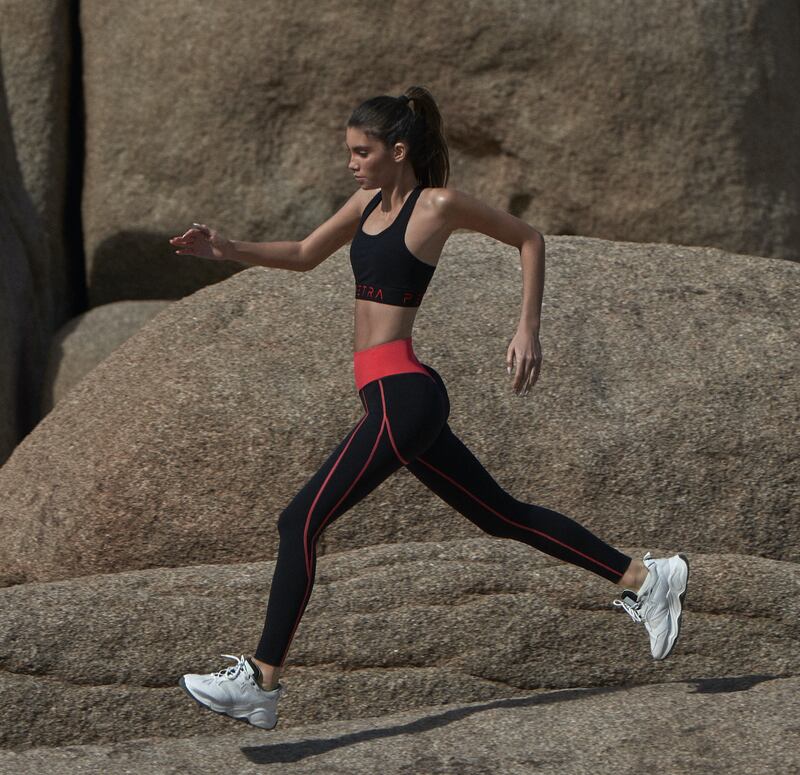
The Business of Fashion
Agenda-setting intelligence, analysis and advice for the global fashion community.

Agenda-setting intelligence, analysis and advice for the global fashion community.

LONDON, United Kingdom — Seattle-based Girlfriend Collective was launched as a 100 percent sustainable activewear brand. The direct-to-consumer company, founded in 2016 by Quang Dinh and his wife Ellie, made a name for itself when it started handing out free leggings.
“We thought our product was so good that if people tried it for the first time, they would understand the quality and ditch whatever brands they were buying,” said Dinh. But at $70 a pair, many customers couldn’t be convinced to pay the costs that came with a sustainable product. “That was a learning for us,” he said. Girlfriend Collective declined to give revenue figures but confirmed a positive outlook for the year ahead.
With the global market for sportswear expected to reach $411 billion by 2023, according to Euromonitor International, a steady stream of brands are emerging to cater to demand for that perfect balance of comfort, aesthetic, performance and price. And with fashion's current sustainability buzz continuing to grow, many brands are looking to serve their customers' eco-friendly expectations too.
What Makes an Activewear Product Sustainable?
ADVERTISEMENT
Activewear is typically made from blended synthetic fibres to provide it with the desired stretch, lightness and sweat-wicking properties. Derived from petrochemicals, these fibres are difficult to recycle once blended and are big contributors to microfibre pollution.

Petra's Spring/Summer 2019 campaign | Source: Courtesy
Elastane — also known as Lycra or spandex — is one material holding activewear back from achieving “full” sustainability; with no viable alternative, even the most eco-friendly of brands are forced to dispose of it in the recycling process. Girlfriend Collective uses a 79 percent recycled polyester, 21 percent elastane blend. “There’s no other fibre that I know of in the marketplace that can replace spandex,” said Dinh.
Sweaty Betty’s recycled “Super Sculpt” legging uses 74 percent recycled polyester, 26 percent elastane. “I don’t know how to how to develop a legging without elastane to be honest,” said Sweaty Betty Founder Tamara Hill-Norton. “That has been our big challenge.”
Polyester, nylon and spandex (aka elastane or Lycra) are the synthetic fibres most commonly used in activewear thanks to their inherent technical properties. A number of manufacturers are attempting to find sustainable alternatives; testing recycled plastic, new applications for natural fibres and using technology to create yarns from innovative sources.
"Polyester is very easy to recycle because it is made of PET, like plastic bottles," said Pietro Boselli, founder of sustainable activewear brand Petra, which launched in 2018 with the aim of combining technical performance, luxury fashion aesthetics and sustainable production practices.
There's no other fibre that I know of in the marketplace that can replace spandex.
Petra uses Italian manufacturer Aquafil's "Econyl" yarn in their products, which is made by recovering nylon waste — such as fishing nets from the oceans, fabric scraps from mills and carpets destined for landfill — and turning it into virgin quality nylon yarn. Econyl has been used by the likes of Burberry, Prada, H&M and Stella McCartney for apparel and accessories.
Sustainable Fabrics Are Available — For a Price
ADVERTISEMENT
But recycling both polyester and nylon "is a very expensive and energy-consuming process, especially when compared to using virgin material," said Boselli. While the technology has existed for a long time, progress is slow and there are only a handful of players investing in recycled fibres, because "the main drivers are always economical," Boselli said.
When Sweaty Betty decided to focus on recycled polyester to produce sustainable activewear, the brand found a lack of options available.
“The demand is outstripping the supply as everyone is looking for recycled yarn,” said Hill-Norton. Sweaty Betty uses technical fabric manufacturers in Taiwan to create the brand’s only recycled legging, the Super Sculpt.
The demand is outstripping the supply as everyone is looking for recycled yarn.
Many of the sustainable yarns Sweaty Betty found weren’t able to match the quality and performance of synthetic materials, according to Hill-Norton. “We are doing internal wearer trials and they just don’t feel the same,” she said. Matching customer expectations for sustainable fabrics is “a massive challenge,” she added.
Another challenge facing brands wanting to move into sustainable activewear is matching their retail prices against non-sustainable alternatives. “Its very hard to benchmark your original price point,” said Hill-Norton. “We don’t want to charge our customers more, even though it is costing us more.”
For brands that are prepared to invest in sustainable yarns, longer-term sustainability goals must be balanced with the risk of slimmer profit margins. With higher demand for the few sustainable yarns in existence comes longer lead times and additional cost. Product development for the Super Sculpt took Sweaty Betty nearly two years, compared with a year to develop a normal legging from scratch.

Girlfriend Collective's Autumn/Winter 2019 campaign | Source: Courtesy
“Where we are having to squeeze our margin in recycled products, we can offset it in other areas, but the recycled yarn is more expensive,” said Hill-Norton. “That’s why we have to look at it strategically and take it step by step.”
ADVERTISEMENT
“If an item costs little money, its because the environment is carrying the cost, or someone else like a worker hasn’t been paid fairly,” Boselli said.
Think About the Full Cycle
Brands striving to create a sustainable product need to consider not just where their product came from, but where it will go after the consumer has finished with it.
Some activewear brands, including Sweaty Betty, run recycling programmes where customers can return old leggings, which are ground and pressed into briquettes for the cardboard industry or broken down into home insulation. Girlfriend Collective's Re-Girlfriend programme takes this one step further. Launched in August, the scheme marks the first time an activewear brand is offering to recycle its old leggings back into the same product.
“I did not want to downcycle and have an end of life where we take it back and chop it into filler,” said Dinh. “We had always thought about closing the loop.” For Girlfriend Collective — who are aiming for 100 percent recyclability and biodegradability — “making regenerated clothing is the holy grail of what we do. If we make clothes, we need to recycle it into the same clothes.” (The process does, however, require significant energy to separate the recyclable polyester from the 21 percent non-recyclable elastane, which still ends up as waste.)
Conscious decision-making has to be implemented right from the start of the design process for sustainable products, which is where younger activewear brands can find an advantage against bigger, more established competitors. "Obviously the green, eco story wasn't as big when we started," said Hill-Norton.
But the new start-ups on the scene aren’t just competition for the likes of Sweaty Betty, they offer inspiration too: “If [start-up activewear brands] are managing to do this with a tiny little team, then we can do it too.”
Editor's Note: This article was revised on October 18, 2019. An earlier version of this article stated that Sweaty Betty uses technical fabric manufacturers in China and dyeing specialists in Portugal to create the Super Sculpt legging. This is incorrect. It uses technical fabric manufacturers in Taiwan.
Related Articles:
[ Can Recycling Fix Fashion's Landfill Problem?Opens in new window ]
[ Building a Sustainable Brand: How to Get StartedOpens in new window ]
[ Gore-Tex. Lycra. Could Fashion's Next Major Fabric Brand Be Green?Opens in new window ]
The trial of Colombian designer Nancy Gonzalez for smuggling alligator and snakeskin handbags into the US shone a rare public spotlight on the trade in the exotic skins used for some of fashion’s most expensive and controversial products.
Europe’s Parliament has signed off rules that will make brands more accountable for what happens in their supply chains, ban products made with forced labour and set new environmental standards for the design and disposal of products.
Fashion’s biggest sustainable cotton certifier said it found no evidence of non-compliance at farms covered by its standard, but acknowledged weaknesses in its monitoring approach.
As they move to protect their intellectual property, big brands are coming into conflict with a growing class of up-and-coming designers working with refashioned designer gear.